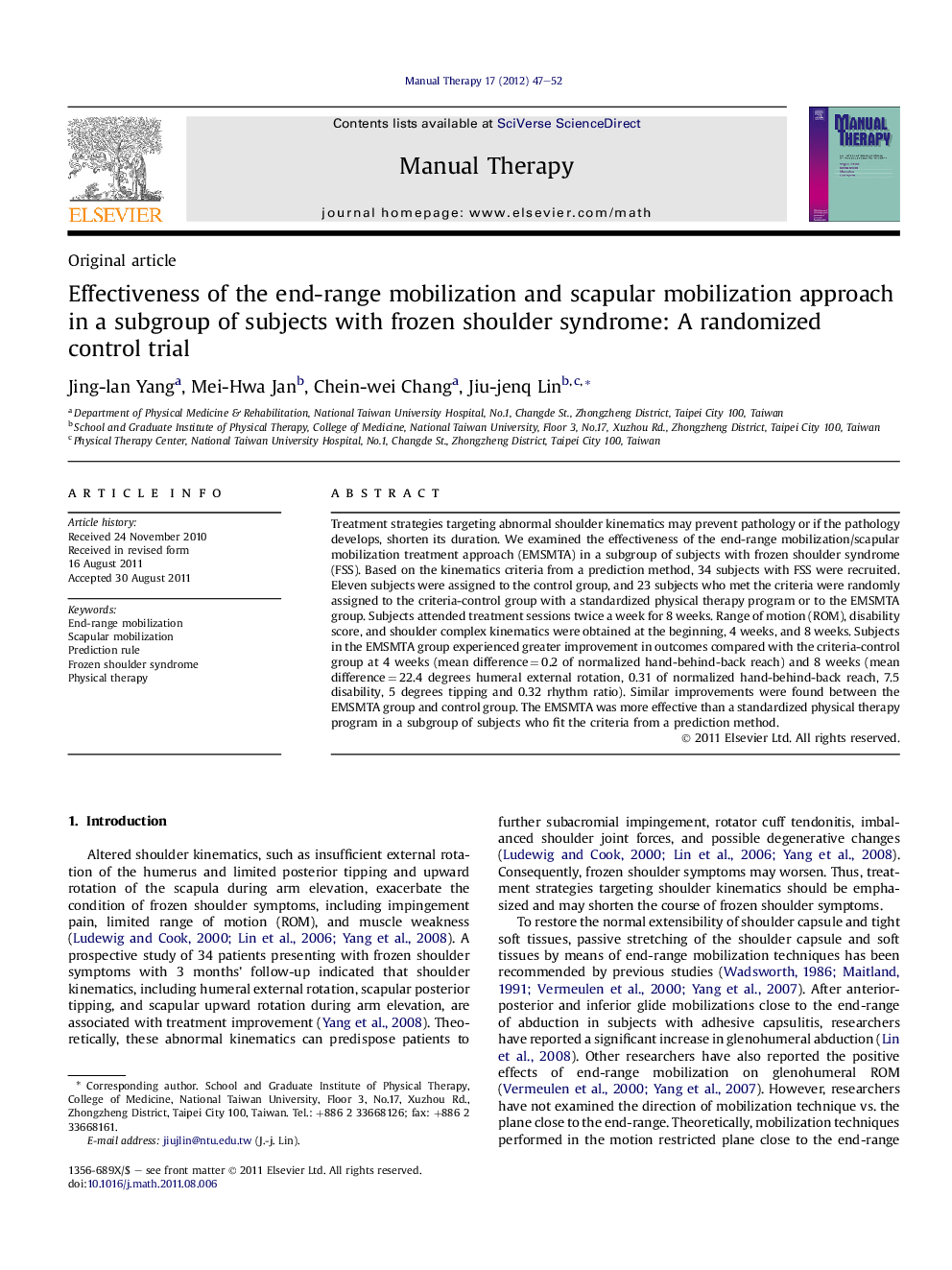| Article ID | Journal | Published Year | Pages | File Type |
|---|---|---|---|---|
| 2625212 | Manual Therapy | 2012 | 6 Pages |
Treatment strategies targeting abnormal shoulder kinematics may prevent pathology or if the pathology develops, shorten its duration. We examined the effectiveness of the end-range mobilization/scapular mobilization treatment approach (EMSMTA) in a subgroup of subjects with frozen shoulder syndrome (FSS). Based on the kinematics criteria from a prediction method, 34 subjects with FSS were recruited. Eleven subjects were assigned to the control group, and 23 subjects who met the criteria were randomly assigned to the criteria-control group with a standardized physical therapy program or to the EMSMTA group. Subjects attended treatment sessions twice a week for 8 weeks. Range of motion (ROM), disability score, and shoulder complex kinematics were obtained at the beginning, 4 weeks, and 8 weeks. Subjects in the EMSMTA group experienced greater improvement in outcomes compared with the criteria-control group at 4 weeks (mean difference = 0.2 of normalized hand-behind-back reach) and 8 weeks (mean difference = 22.4 degrees humeral external rotation, 0.31 of normalized hand-behind-back reach, 7.5 disability, 5 degrees tipping and 0.32 rhythm ratio). Similar improvements were found between the EMSMTA group and control group. The EMSMTA was more effective than a standardized physical therapy program in a subgroup of subjects who fit the criteria from a prediction method.
